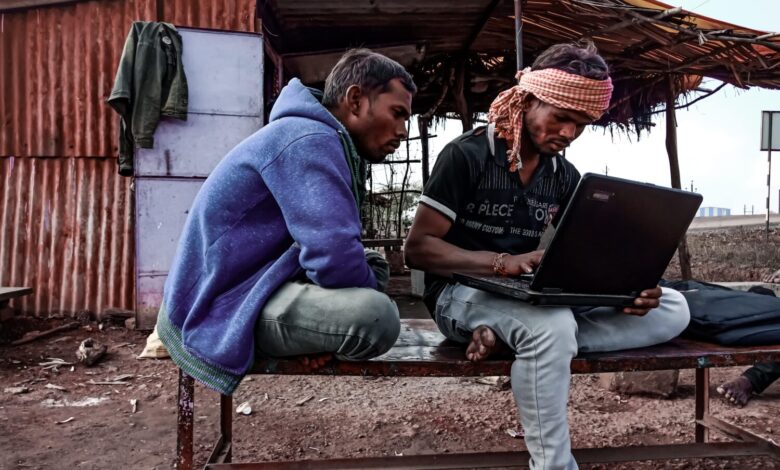India: Telecom Bill and the new era of digital colonialism

In December 2023, India took a significant step towards reshaping its telecommunications landscape by introducing a new Telecommunication Bill. ARTICLE 19 joins the international digital rights community, in raising concerns about the bill’s threats to privacy and the power it gives the central government to enforce decisions that could directly harm citizens’ right to freedom of expression. The legislation, while aiming to bridge connectivity gaps and modernise the telecom sector, inadvertently risks entrenching corporate and governmental control, potentially at the expense of digital democracy and local innovation.
Perhaps the most alarming aspect of the Telecommunication Bill is its provision for government-mandated internet shutdowns. This power, ostensibly for security, veils a stark threat to the fundamental rights of privacy and freedom of expression. By granting the government such sweeping authority, the bill risks institutionalising digital authoritarianism, where connectivity is a privilege dispensed at the whim of the state, rather than an inalienable right enabler, enabling not only freedom of expression, but also access to education, health and humanitarian assistance.
Much less attention has been paid to the misguided way in which the bill attempts to address India’s digital divide. The Indian government has positioned it as a catalytic agent for India’s digital infrastructure. However, beneath the surface of the bill’s ostensibly progressive provisions lies a web of implications that merit a critical examination, particularly from the perspective of facilitating or hindering meaningful connectivity to the internet.
The present and the promises: India’s telecom terrain
India stands as a leader in the mobile internet domain, trailing only behind China in terms of the largest number of internet users globally. This vast user base accesses the internet predominantly via mobile networks: the latest ITU data (2022) shows that 56 per 100 inhabitants have a mobile broadband subscription, versus only 2 per 100 connecting to the internet via a fixed broadband subscription. Giants like Reliance Jio and Bharti Airtel dominate this sphere with more than 90% market share, with Jio’s aggressive pricing strategies previously upending market dynamics.
However, beneath the surface, a considerable digital divide persists, especially between urban and rural areas, as well as among different socio-economic groups. Although the price of connectivity in India is considered low, it does not translate into fast and reliable connection. Accessing just another GB of data implies an investment of 1 to 2 USD per day. The lack of sufficient ‘backhaul’ (the part of a communication network that connects local networks to the main internet infrastructure) limits the widespread access to the service. In other words, because the core network isn’t strong enough, it’s difficult to provide reliable internet to all the smaller, local networks. This weakens the overall availability and reach of the service, especially in places where the demand does not translate into profits, predominantly outside the urban areas. Issues with the quality of service, including inconsistent internet speeds and frequent disruptions, are also prevalent This affects the overall user experience and can hinder the adoption of digital services in more remote areas of the country.
The veiled costs of satellite supremacy
One of the most discussed changes in the bill involves permitting satellite service providers to access the spectrum through an administrative process rather than the traditional, and often very expensive, spectrum auction. This move has been lauded by a significant part of the media for its potential to foster competition and expand internet coverage, seen as a solution for remote and rural areas where traditional fibre deployment is impractical and economically unfeasible.
ARTICLE 19 cautions against too much optimism around satellite internet. With the market dominated by the players from the Global North, heralding satellite internet as the panacea for all connectivity issues risks perpetuating this dominance, potentially at the expense of stifling local innovation and technological autonomy.
The entry of satellite services into the Indian market, predominantly led by American giants like Starlink and Kuiper, raises concerns about the perpetuation of digital colonialism. It could further skew the digital infrastructure playing field, stifling the growth of grassroots telecommunication infrastructures. While we might see more diversity in the technologies of services, in terms of connectivity, the users will still be treated as mere consumers, and the internet as simply a service. This is a very narrow understanding of the internet’s potential, which should instead be thought of as a key enabler of human rights, allowing people to express themselves freely, communicate with others, or access education or healthcare.
Privileging commercial Internet Service Providers (ISPs), satellite or not, can also have negative consequences for content developed by local communities. ISPs can enter partnerships or agreements with content providers, through which they might prioritise delivery of content from partners over that of their competitors. In some cases, ISPs also offer their own content, which they deliver through their networks, further disadvantaging independent content producers.
Community networks: a missed opportunity for radical transformation
Community networks present a vibrant counterpoint to conventional telecom models, especially in India’s underserved locales. From solar-powered internet vans in the Little Rann of Kutch to collaborations with community radios, these initiatives exemplify the power of localised, innovative approaches to democratise internet access, including developing digital literacy.
Community-run networks can be particularly transformative in underserved or rural areas where commercial providers may not see a profitable market. These networks empower communities to build, operate, and maintain their own internet services, promoting local content and services tailored to specific needs and cultures.
The best way to ensure community networks can thrive is through maintaining access to unlicensed spectrum. Unlicensed spectrum offers lower barriers to entry, since it can be used by anyone without the need for costly licences or compliance with stringent regulations. Unlicensed networks can also provide additional resilience and redundancy in communications infrastructure. In disaster scenarios, for instance, community networks can sustain communication even when traditional networks fail, ensuring continuity of service.
Unlicensed spectrum can serve as a platform for free expression and information dissemination, crucial in regions with a great diversity of cultures and traditions such as India. It supports a multiplicity of voices and viewpoints,contributing to a more equitable and participatory digital landscape.
The Universal Service Obligation Fund, now called Digital Bharat Nidhi includes in its obligations to support universal service through promoting access to and delivery of telecommunication services in underserved rural, remote and urban areas. This, coupled with the prospect of administratively allocated spectrum, could significantly bolster community-led endeavours, offering a more inclusive and resilient connectivity paradigm. Unlicensed spectrum fosters innovation by providing a cost-effective platform for new technologies, following global best practices and allowing community-led initiatives to flourish, especially in rural and remote communities.
The Telecommunication Bill lists 19 cases where the assignment of spectrum via administrative process is possible; among them are internationally recognised dedicated bands for amateur stations, navigation, telemetry, and other like usages, community Radio Stations, certain satellite-based services such as: Teleports, Television channels, Direct To Home, Headend In The Sky, Digital Satellite News Gathering, Very Small Aperture Terminal, Global Mobile Personal Communication by Satellites, National Long Distance, International Long Distance, Mobile Satellite Service in L and S bands.
The inclusion of community radio and amateur radios in the list can offer some possibilities for grassroots initiatives, especially in rural areas. However, the lack of more explicit financial support to help with their sustainability is a huge missed opportunity for fostering genuine technological autonomy and innovation. Community networks need local solutions to remain sustainable, not top-down business models that aim solely for the largest profit.
Allowing commercial satellite companies to access spectrum through the same administrative process risks further hindering the development of innovative solutions. The ISP market in India is highly concentrated, with very powerful companies often emboldened to dictate terms. We are already seeing possible threats coming from the incumbent telecom industry, directly related to the benefits of the unlicensed use of the 6GHz spectrum. It is not realistic to introduce a new powerful player such as the commercial satellite industry in the ISP environment and expect community-led initiatives offering technological autonomy to thrive equally.
By not fully embracing the potential of community networks, the bill overlooks a critical pathway to reshaping India’s digital landscape into one that is truly inclusive, resilient, and reflective of its diverse needs and aspirations.
A call for reimagined connectivity
In its current form, India’s Telecommunication Bill is a paradox, embodying both the promise of enhanced connectivity and the peril of increased control and inequality. A truly transformative approach would require a critical reevaluation of the bill, with a heightened emphasis on local innovation, equitable access, and the protection of digital rights.
As it stands, the bill presents a vision of the future that could all too easily succumb to the usual corporate dominance. The push towards unlicensed spectrum bands to promote cost-effective connectivity and innovation could end up simply favouring a couple of commercial satellite internet providers.
The bill, intended to update outdated colonial-era laws, paradoxically replicates a colonial mindset in its approach to telecommunications governance. Firstly, it undermines human rights and democratic values through state-enforced control and potential internet shutdowns. Secondly, it promotes easier access to spectrum for predominantly foreign commercial satellite giants, which can stifle growth of local initiatives and telecommunications infrastructure. This approach not only relegates users to mere consumers of externally provided services but also impedes their technological independence, exacerbating the problems of digital colonialism.
ARTICLE 19 extends thanks to Steve Song and Ritu Srivastava who contributed their expertise to the drafting of this piece.



